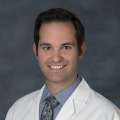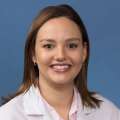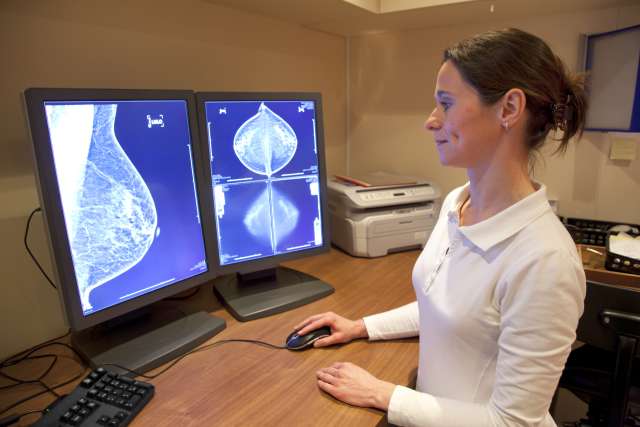In March 2021, 33-year-old Seammala Sun had just started her dream job as an interior designer when she began experiencing ringing in her ears that wouldn’t go away. She thought it might be tinnitus.
Doctors weren’t too worried and gave her some medication to hopefully reduce the pressure in the ears.
But the ringing didn’t stop. And soon Sun started to feel numbness on the right side of her face. Concerned, she quickly headed to the local community urgent care.
But again, the medical team wasn’t too worried.
“I jokingly asked the nurse practitioner if he thought it might be a tumor and he laughed saying he highly doubted it since I didn’t have any symptoms or signs of a tumor,” said Sun.
But Sun would soon learn that tinnitus and face numbness were actually symptoms of vestibular schwannoma, a type of slow-growing, nonmalignant brain tumor.
An unexpected diagnosis
After her urgent care visit, Sun followed up with her general practitioner and took a pregnancy test since she was a few days late. To her delight and surprise, she found out she was pregnant with her first child and was overjoyed by the news.
But because she was still having ringing in her ears, her doctor ordered an MRI and scheduled her an appointment to see an ear, nose and throat (ENT) specialist. Sun got the MRI in early July and went back to her job, where she was working on installing rooms for a hotel in downtown Los Angeles.
Later that month, while working on some sites with her boss, Sun got a call from her physician with the MRI results. They found that her symptoms were being caused by a cherry-sized tumor near her brainstem — but they didn’t suspect that it was cancer.
“I immediately just started crying hysterically,” said Sun. “It was horrible because I found out I was pregnant in May and then come July and I find out I have a tumor in my brain. It was just wild and a lot to take in. The only saving grace was that she said she didn’t think it was cancer.”
Sun had vestibular schwannoma, also known as acoustic neuroma, which is a noncancerous fibrous tissue tumor arising from the vestibulocochlear nerve, which is located in the inner ear and controls hearing and balance. Nerves in the body, much like electrical wires, are covered with insulation that helps them conduct electrical signals. This insulation is created by Schwann cells —the cells from which schwannoma tumors originate.
These types of tumors can cause a variety of symptoms, including ringing in the ears, facial numbness, hearing loss, dizziness and loss of balance.
Typical treatment for this type of tumor involves surgery and radiation, but Sun's pregnancy heightened the risk of complications, requiring specialized care.
Navigating care with a multidisciplinary team of experts
Sun soon found herself at UCLA Health with a team of experts under the guidance of neurosurgeon Richard Everson, MD, who specializes in the treatment of both benign and malignant tumors in the brain and spine.
Everson, an assistant professor of neurosurgery at the and investigator in the UCLA Health Jonsson Comprehensive Cancer Center, aimed to delay surgery as long as possible, but only if the tumor stayed stable. Tumor growth can trigger hydrocephalus, a condition where extra fluid builds up in the brain, causing harmful pressure on the brain's tissues, which can be life-threatening.
“While these tumors don't always grow, pregnancy can sometimes induce their growth due to hormonal changes and increased blood volume,” said Dr. Everson. “This makes it a complex situation, but we can’t rush into surgery because the procedure is delicate, high-risk, and typically lasts 10 to 12 hours, involving critical areas near the brainstem and cranial nerves.”
To monitor the growth of the tumor and the development of hydrocephalus, Sun underwent several scans throughout her pregnancy.
“We couldn’t use CT scans because they involve radiation, which can be harmful to the fetus,” explained Dr. Everson. “While an MRI is safe, the typical scan takes about an hour lying flat, which is difficult for patients to tolerate in late pregnancy. So, we worked closely with radiologist Dr. Noriko Salamon to devise a specific, shortened MRI protocol that gave us all the detail we needed to monitor tumor growth.”

The team observed subtle signs of tumor growth during Sun’s second and third trimesters and remained vigilant, closely monitoring her condition with frequent brain scans. This involved close collaboration with radiology, ENT specialists, and her OBGYN team, which included Carla Janzen, MD, PhD, an expert in maternal-fetal medicine and high-risk pregnancies, and obstetrician-gynecologist Brittany Davis, MD.
“What’s special about a place like UCLA is that we have a team of diverse specialists who can handle incredibly complex situations,” said Dr. Janzen. “Pregnancy and brain tumors are challenging enough on their own, but when you combine them, you need a place equipped to manage it.”
Sun was admitted on Jan. 10, 2022 and scheduled to have a vaginal birth. Along with her OBGYN team, the brain tumor team was there on standby, ready to intervene if any urgent procedures were needed. Due to some concerns with the baby tolerating a long labor, Sun ended up having an emergency Cesarean section and gave birth to a perfectly healthy baby girl on Jan. 13. Sun and her husband named her Lottie.
A few weeks after giving birth, it was finally time for Sun to have the tumor removed, as it had begun pressing on her brainstem. The surgery was a complex and high-risk procedure that included a transmastoid translabyrinthine and retrosigmoid craniotomy, which involves working around critical nerves and structures in the brain. It was performed by Dr. Everson in collaboration with skull base neurotologist Akira Ishiyama, MD, professor of head and neck surgery at UCLA Health.

These procedures involve operating through the mastoid bone, which is located just behind the ear, and the inner ear structure called the labyrinth. By removing parts of these bones, surgeons can safely reach a tumor at the base of the skull, near the brainstem. The removal of the tumor is then a delicate operation because it involves nerves responsible for hearing, balance and movement of the face. In all, this complex, multipart microsurgical operation lasted more than 14 hours.
“I was definitely ready for this surgery,” said Sun. “It had just been this monkey on our back the whole time and I was ready for it all to be done.”
After the extensive surgery, Dr. Everson and his team were able to remove the now golf ball-sized tumor without any damage to the facial nerve. In the years since, the team has continued to monitor Sun to ensure everything stayed stable.
“My husband and I are just so thankful to Dr. Everson and the whole team that cared for me,” said Sun. “They’ve helped me become a mom and I get to watch my baby turn into this amazing human being.”
Sun also credits her family, especially her mother and in-laws, for their unwavering support during her recovery after Lottie’s birth and her surgery.
“Their support was truly invaluable,” said Sun. “They helped my husband and me through countless appointments, scans, and ultimately my recovery. They took turns flying out from New York and Philadelphia to be by my side, caring for both me and my newborn daughter over several months. Having them close during this time meant everything to me, and their presence made all the difference in my healing.”
A new path
After her surgery, Sun and her husband decided to move to London for a job and explore a new city with Lottie, who will be turning 3 soon.
"When the job offer came, I thought, 'You know what? Let’s go for it,’” said Sun. “I had just gone through this huge health scare and come out the other side. We’re healthier, stronger, and happier because of it."
Sun often hears from others who have undergone brain surgery or knows someone who has had brain surgery and all agree that advocating for yourself is a must when it comes to your health.
"Always see a doctor as soon as possible and push for thorough testing and referrals," Sun said. "What may seem minor could be something serious, even if others downplay it."
Take the Next Step
Learn more about the UCLA Brain Tumor Center and the UCLA Multidisciplinary NF and Schwannomatosis Clinic.








